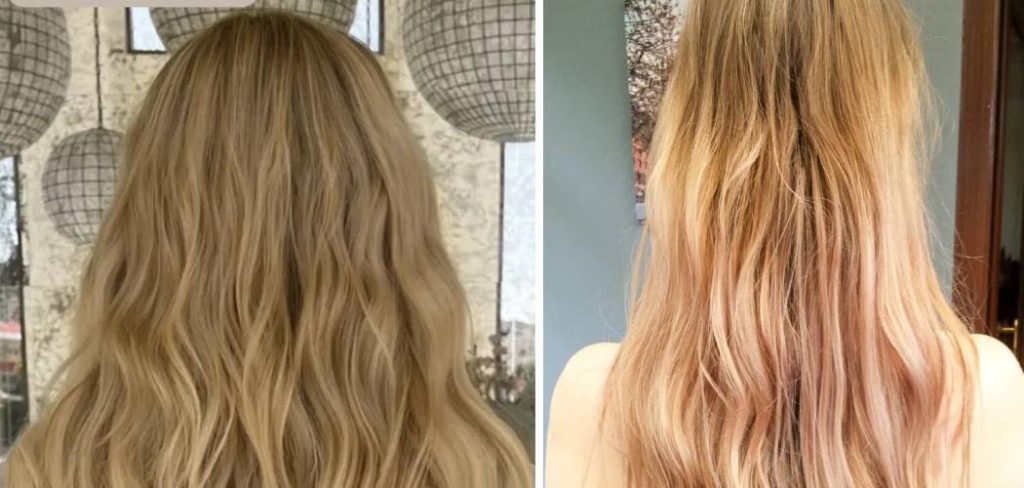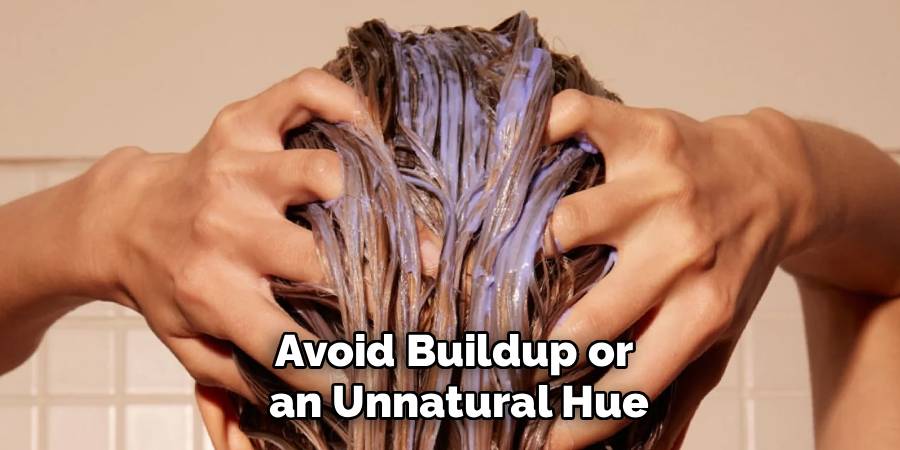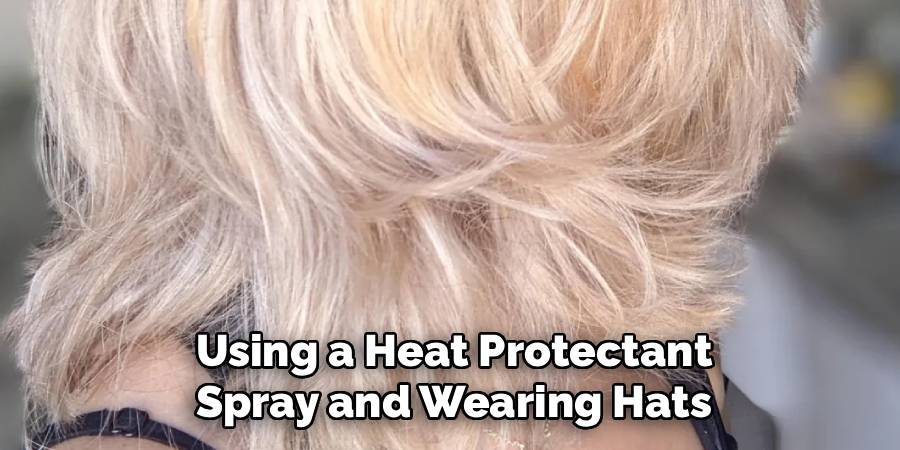Purple shampoo is a popular hair care product designed to neutralize brassy or yellow tones in blonde, silver, or gray hair. Its unique violet pigments work to counteract unwanted warmth, helping to maintain vibrant and cool-toned hues. Whether you’ve recently dyed your hair or are looking to enhance your natural color, understanding how to use purple shampoo correctly can make all the difference in achieving salon-quality results at home.

What Is Purple Shampoo?
Purple shampoo is a specialized hair care product formulated with violet pigments that help neutralize warm or yellow undertones in light-colored hair. The purple color works to counteract the brassy tones because it is opposite yellow on the color wheel, effectively balancing the hue. It is especially popular among individuals with blonde, platinum, silver, or gray hair, as these shades are more prone to developing unwanted yellow tones over time due to factors like sun exposure, mineral buildup, or heat styling. By incorporating purple shampoo into your routine, you can preserve the cool, ashy tones of your hair and keep it looking fresh and vibrant.
Who Can Benefit from Purple Shampoo?
Purple shampoo is a game-changer for anyone with light-colored hair, including natural blondes, those with platinum or silver locks, and individuals who have opted for gray tones as part of their style. It’s also highly beneficial for people with highlights, balayage, or ombré styles that feature blonde elements. Even brunettes with lighter, cooler tones can find value in using diy purple shampoo to maintain the integrity of their color and prevent any brassiness from developing. Whether your lightened hair is natural or the result of professional coloring, purple shampoo is an essential tool for neutralizing unwanted yellow tones and keeping your hair looking salon-fresh.
10 Methods How to Use Purple Shampoo
1. Choose the Right Purple Shampoo for Your Hair Type
Before applying purple shampoo, it’s essential to select a formula that suits your specific hair type and color treatment. Purple shampoo is generally used to neutralize yellow and brassy tones in blonde, silver, grey, or lightened hair. However, not all purple shampoos are made the same. If you have dry or damaged hair, look for a product that includes hydrating ingredients such as keratin, argan oil, or coconut milk. If your hair is fine or oily, opt for a lightweight or clarifying formula that won’t weigh down your strands. Reading the label and choosing a shampoo designed for your exact hair needs ensures optimal results and minimal damage.

2. Wet Hair Thoroughly Before Application
To use purple shampoo effectively, start by completely wetting your hair with warm water. This helps open the hair cuticle slightly, allowing the pigment to be absorbed more evenly across the strands. Make sure every part of your scalp and ends are damp, especially if your hair is thick or long. Applying purple shampoo to dry or partially wet hair can result in uneven toning, leading to patchy or dull results. Proper saturation is a crucial first step that sets the foundation for successful application and even tone correction.
3. Apply a Small Amount and Distribute Evenly
Once your hair is wet, apply a small amount of purple shampoo—typically about the size of a quarter for short hair and more for longer lengths. Begin at the roots and work your way through the hair, gently massaging the shampoo into a rich lather. Use your fingers or a wide-tooth comb to help distribute the product evenly from root to tip. Concentrate on areas where brassiness is most noticeable, such as the crown or around the face. Even application prevents patchiness and ensures that the toning pigment corrects all parts of the hair equally.

4. Allow the Shampoo to Sit for a Few Minutes
The effectiveness of purple shampoo depends significantly on how long it’s left in the hair. After lathering, let the product sit for anywhere from 1 to 5 minutes, depending on how much toning you need. If your hair is extremely brassy or yellow, a longer wait time may be beneficial. For those using purple shampoo for the first time, it’s advisable to start with a shorter duration to avoid overtone or a purplish tint. Always check the product instructions, as some brands may recommend different timing guidelines. Patience during this step allows the pigments to do their job effectively.
5. Rinse Thoroughly with Cool or Lukewarm Water
Once the shampoo has sat for the desired amount of time, rinse your hair thoroughly with cool or lukewarm water. Avoid hot water, as it can strip the toner and lead to dryness or fade the color faster. Make sure all traces of the purple shampoo are rinsed out to prevent residue, which can leave behind a dull film or unwanted tint. Rinsing with cooler water also helps seal the hair cuticle, locking in the toning pigment and leaving your hair looking smoother and shinier. Clean rinsing is key to achieving a balanced, natural tone.
6. Follow with a Hydrating Conditioner or Hair Mask
Purple shampoos, especially those with high pigment concentrations, can be drying when used alone. After rinsing, it’s important to apply a moisturizing conditioner or deep hair mask to restore softness and hydration. Focus on the mid-lengths and ends, avoiding the scalp unless it’s particularly dry. Look for products rich in natural oils, proteins, or humectants like glycerin to nourish the hair. This step not only revives moisture but also helps maintain the overall health and elasticity of lightened hair, which tends to be more fragile.
7. Use Purple Shampoo Only as Needed
Purple shampoo is a toner, not a daily cleanser, and should be used sparingly to avoid buildup or an unnatural hue. For most users, applying it once or twice a week is sufficient to maintain cool tones and reduce brassiness. If you use it too frequently, it can over-neutralize and leave a violet or gray cast on the hair. Monitor your hair’s appearance and adjust usage accordingly—some people may need it only once every 10 days, while others may benefit from bi-weekly use depending on water type, sun exposure, and hair porosity.

8. Alternate with Sulfate-Free Shampoos
To maintain both your hair tone and health, alternate purple shampoo with a gentle, sulfate-free regular shampoo. Sulfate-free formulas cleanse the hair without stripping away natural oils or color, making them ideal companions for color-treated or bleached hair. On non-toning days, use this mild shampoo to wash your hair and follow with a conditioner. This practice allows your hair to stay clean and moisturized while preventing the purple shampoo from overpowering your natural tones. A balanced routine ensures your hair stays vibrant and manageable.
9. Protect Toned Hair from Heat and UV Exposure
After using purple shampoo to correct brassiness, you should take extra steps to preserve the tone. Exposure to heat styling tools and UV rays can rapidly fade the effects of toning. Always apply a heat protectant spray before using blow dryers, curling irons, or straighteners. Additionally, if you’re going out into the sun, wear a hat or apply a UV-protectant hair mist. These simple precautions prevent the hair from oxidizing, which is one of the main causes of brassy tones. Keeping your hair shielded ensures that the benefits of purple shampoo last longer.
10. Perform Regular Hair Assessments and Adjust Use
Over time, your hair’s needs will change due to seasonal shifts, new products, or evolving color treatments. It’s important to periodically assess how your hair responds to purple shampoo. If you notice your hair starting to look dull, overly cool, or tinged purple, scale back usage or switch to a lighter formula. Conversely, if brassiness returns, slightly increase frequency. Listen to your hair and be flexible with your routine. Regular self-evaluation helps you make the most of purple shampoo without compromising the health or tone of your hair.
Maintenance and Upkeep
Proper maintenance and upkeep are key to achieving long-lasting results with purple shampoo. Start by pairing it with a hydrating conditioner or mask to replenish moisture, as purple shampoos can sometimes be drying. Incorporate regular deep conditioning treatments to ensure your hair remains soft and healthy. Additionally, protect your hair from heat styling and UV exposure, which can fade color and increase brassiness. Using a heat protectant spray and wearing hats or using UV-protection hair products can make a significant difference. Remember that consistency is essential—develop a routine that works for your specific hair type and needs, and adjust as required for seasonal changes or other factors. This proactive approach will help maintain vibrant, beautiful hair with minimal effort.

Conclusion
In conclusion, maintaining healthy and vibrant hair requires a combination of the right products, consistent care, and protection against environmental factors. By adopting a tailored routine that meets your hair’s unique needs and staying mindful of damage prevention, you can enjoy strong, beautiful hair year-round. A little effort and regular care go a long way in keeping your hair looking its best. Thanks for reading our blog post on how to use purple shampoo! We hope you found it helpful and informative.
About the Author
Jane Hubbard is a passionate beauty expert with a wealth of experience in makeup, hair, and overall beauty techniques. After years of working as a hairdresser specialist, she followed her entrepreneurial spirit and started her own consultancy business.
Jane has always been driven by her desire to help others feel confident in their own skin, and she does this by sharing her knowledge, experiences, and practical beauty tips. Through her consultancy, she empowers individuals to embrace their unique beauty, offering tailored guidance that boosts both self-esteem and personal style.
Professional Focus
- Specializes in makeup, hairstyling, and beauty consulting.
- Provides personalized beauty advice, tips, and techniques to help individuals feel confident in their appearance.
- Dedicated to staying up-to-date with the latest industry trends and developments.
- Passionate about creating a comfortable and empowering experience for every client.
Education History
- University of Craft and Design – Bachelor of Fine Arts (BFA) in Woodworking and Furniture Design
- Woodworking Apprenticeships – Extensive hands-on training with skilled craftsmen to refine carpentry and furniture making techniques
- Online Courses & Masterclasses – Continued education in advanced woodworking techniques, design principles, and specialized tools
Expertise:
- Makeup artistry, hairstyling, and beauty consulting.
- Personalized beauty techniques to enhance confidence and self-expression.
- Educating clients on how to maintain their beauty routines at home.
